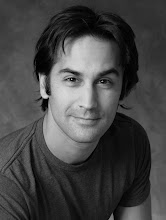With this week’s Blog, I’d like to tear away at the façade, and talk openly about what makes me tick. A real tick talk, in which I can finally share my innermost feelings.
I tend not to do that; artists oft prefer to hide behind a character or a melody or a painting of a bush, rather than create with any forthright representation of self.
But that’s a shame, because some of the finer artistic works of our time are of the confessional sort…
When John Lennon sings, “I’m Just A Jealous Guy”, we are intrigued and enticed by the vulnerability and candor of the lyric: one of rock n’ rolls coolest icons, felled by an all-too human frailty.
When confronted by two roads that diverged in a yellow wood, Robert Frost ‘took the road less traveled by’. Had he been describing some other bloke’s route home, we’d have likely paid it no mind. But we care, because Robert Frost is a celebrated poet. And that, has made all the difference.
And what more compelling example than Frank Sinatra’s inspired claim to have done it his way, (in the song, 'My Way', written by somebody else).
Peering inside oneself is no easy task, however: it requires courage, objectivity and a number of angled mirrors. And while the self-reflective artistic pursuit is so often illuminating, it can be rife with potential pitfalls... particularly in the genre of self-portrait painting, where so many promising works have been sullied by a lack of forethought.
When beginning a self-portrait, be sure to pay close attention to the ‘location’. There is nothing more regrettable for an artist than completing a fetching likeness of one’s own face, and then realizing you’ve set it against a banal or embarrassing backdrop (see Botticelli’s 1481 piece, Botticelli At The Mini-Mall).
Try, instead, to choose a setting that denotes unique and lasting power: positioned over a slain enemy on the battlefield, or leading a parade down Main Street (though ‘parade’ portraits tend to require a real quickness with the brush). Also, be wary of the distance between the site upon which you pose, and the site from which you paint; as both model and painter, you will continually be running back and forth from the easel to the pose.
Of utmost importance, though, is the accurate rendering of one’s own visage. The well-captured self-portrait can help to immortalize an artist, and serve as a dazzling piece of I.D. when entering a nightclub. The self-portrait can also allow an artist to see sides of themselves that they never realized. Upon portraying himself in his classic 1656 painting, Las Meninas, Spanish artist Diego Velazquez was shocked to discover that he had a moustache.
Self-portraits have come in many styles over the years, from the beautifully colored oils of Henri Matisse, to the monochromatic, post-impressionist reflections of Van Gogh. Some artists choose to present themselves in true realist form, warts and all, while others prefer to idealize their depictions, or at the very least, paint over their warts. German painter Albrecht Durer went so far as to compare himself to Jesus Christ, in his self-portrait of 1550, enraging religious groups and prompting American kids across the Bible Belt to stomp on and burn all of their old Durer paintings.
At present, I am taking a third stab at painting my self-portrait, after two earnest but failed attempts. My first kick at the can ended in disappointment when it turned out that my eyes were closed in the picture. On second try, I decided to paint myself in the nude, but stopped halfway through, when I proved to be too ticklish to continue.
This third go-around feels right. It’s done in a realist style, with the expression on my face capturing my state of mind these days: lovestruck, optimistic and contented. And I am well-positioned over my slain enemy on the battlefield.
I end this week’s Blog with another interesting musical fact:
-Contrary to music theory, if every person on the planet stopped what they were doing, and sang the exact same note at the exact same time, there would be harmony-



0 comments:
Post a Comment